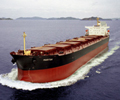Feature: Robust demand, tight supply support European feedstocks in Q1

Reduced refinery runs and imports combined with robust downstream olefins demand led to strong European feedstock prices in first quarter 2021.
Naphtha dominant feedstock
The front-month propane CIF NWE swap contract averaged a premium of $8.30/mt over naphtha for January as the US arbitrage into Europe remained closed on a spike in Asian heating demand, particularly for LPG and LNG. This left naphtha as the dominant feedstock in Europe as propane’s comparative discount did not deepen enough. Despite the volatility in February, propane’s discount of $29.55/mt to naphtha still largely supported maximized naphtha utilization rates. During March, propane’s discount to naphtha retracted to seasonal norms averaging $60.59/mt, well within the territory of minus $50-$60/mt where petrochemicals producers commonly begin maximizing LPG utilization rates.
Nevertheless, tight olefins supply has led to strong cracking margins in Europe, which will likely continue supporting feedstocks prices. Particularly, the steam cracker margin levels seen during the final week of March were at multimonth highs. Strong demand for consumer plastics, such as those used in food packaging, personal hygiene items and medical equipment, supported this.
The strength in the naphtha complex was also evident in the crude crack spreads reaching positive territory — a rare phenomenon — for largely the entire January. They peaked at $1.28/b on Jan. 29 at a more than three-year high. Despite the relative retraction toward the end of the first quarter, the spread averaged minus $1.4/b over March compared with minus $7/b the previous year.
Additionally, naphtha is expected to see support in the spring months associated with seasonal gasoline blending demand, which has been emerging in line with reopening economies in Europe and across the Atlantic.
Demand for naphtha cracking in Northwest Europe is anticipated to decline over the following quarter as it gets more expensive, particularly when compared with propane.
Tight LPG supply
Support for the LPG complex in Q1 was driven largely by tight supply, a result of lower European refinery runs, and poor arbitrage economics from the US. Arrivals of LPG to NWE and the Mediterranean in Q1 were 75% of their levels over the same period in 2020. However, sources anticipated that the arbitrage window will reopen and loosen LPG supplies in Europe from the second half of April onward.
Effects of supply constraints were most apparent within the inland propane market, where premiums over the large cargoes soared to their highest levels since October 2018, despite only modest levels of demand. Nonetheless, market sources expect premiums to begin weakening on the back of declining heating demand during the summer months.
The relative recent strength of naphtha has returned propane to the cracking pool, with maximum cracking expected from April onward.
The butane market in NWE was supported by gasoline blending and petrochemicals cracking demand. Butane is used as a blendstock in winter-grade gasoline. With the transition to summer-grade gasoline in April, blending demand has now largely disappeared, with no return expected until the market returns to winter grade.
West Med butane activity has been more subdued compared with usual Q1 activity levels as coronavirus restrictions have truncated commercial consumption of butane across the region. Although demand is expected to see a boost in April due to increased consumption during the Muslim holy month of Ramadan, this is likely to be stunted compared with previous years.
Refineries reduce output
Both LPG and naphtha availability had been constrained by refinery run cuts in Europe and Russia. Refineries in Europe reduced runs as they had to minimize jet fuel production and adjust to sluggish demand for motor fuels.
Alternatively, run cuts in Russia were accompanied by strong gasoline demand, which resulted in lower naphtha production and exports.
Total Russian naphtha exports into NWE over Q1 are estimated to reach 1.404 million mt while the total for the same period over 2020 stood at 2.171 million mt, Kpler data showed.
Russian refineries have been asked by authorities to ramp up runs ahead of the driving season, but overall production would still be affected by a wave of spring turnarounds.
In Europe, even though maintenance is planned at a number of German refineries, throughput is anticipated to start gradually clawing back, albeit lag behind pre COVID-19 levels.
Source: Platts

 Hellenic Shipping News Worldwide Hellenic Shipping News Worldwide, Online Daily Newspaper on Hellenic and International Shipping
Hellenic Shipping News Worldwide Hellenic Shipping News Worldwide, Online Daily Newspaper on Hellenic and International Shipping





















 PG-Software
PG-Software